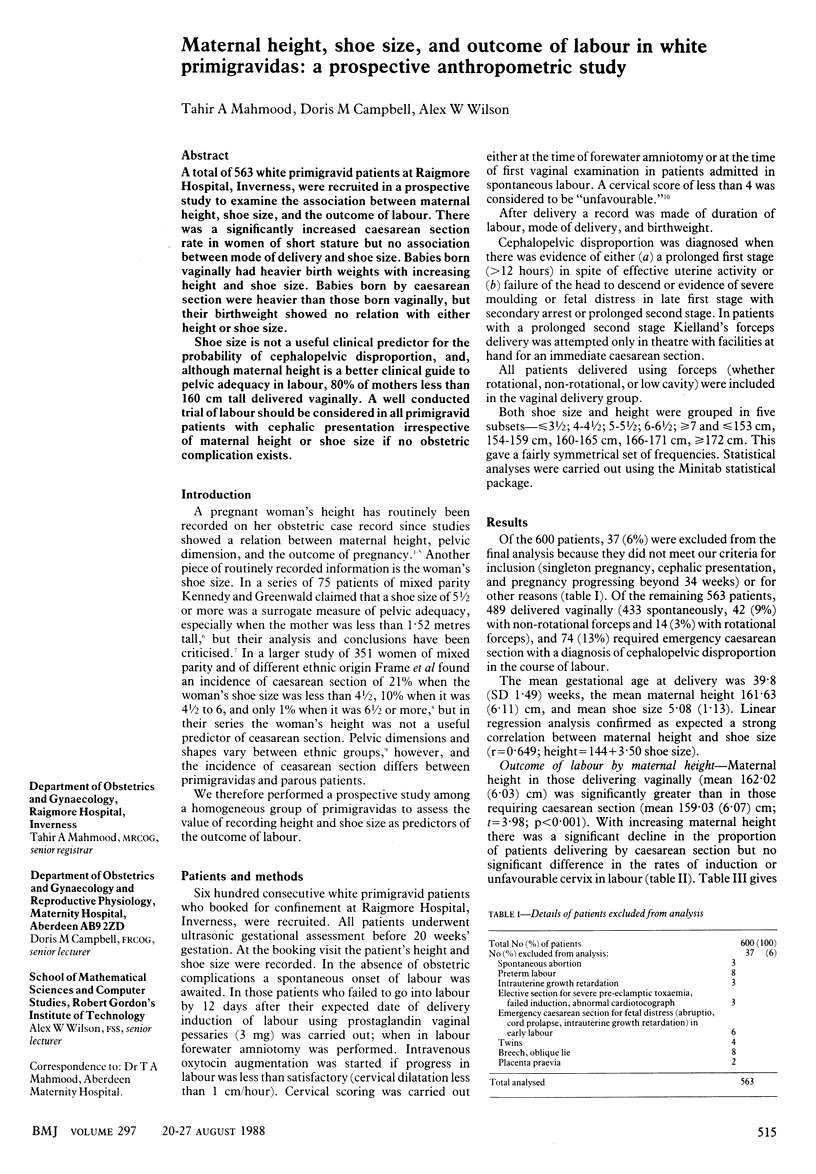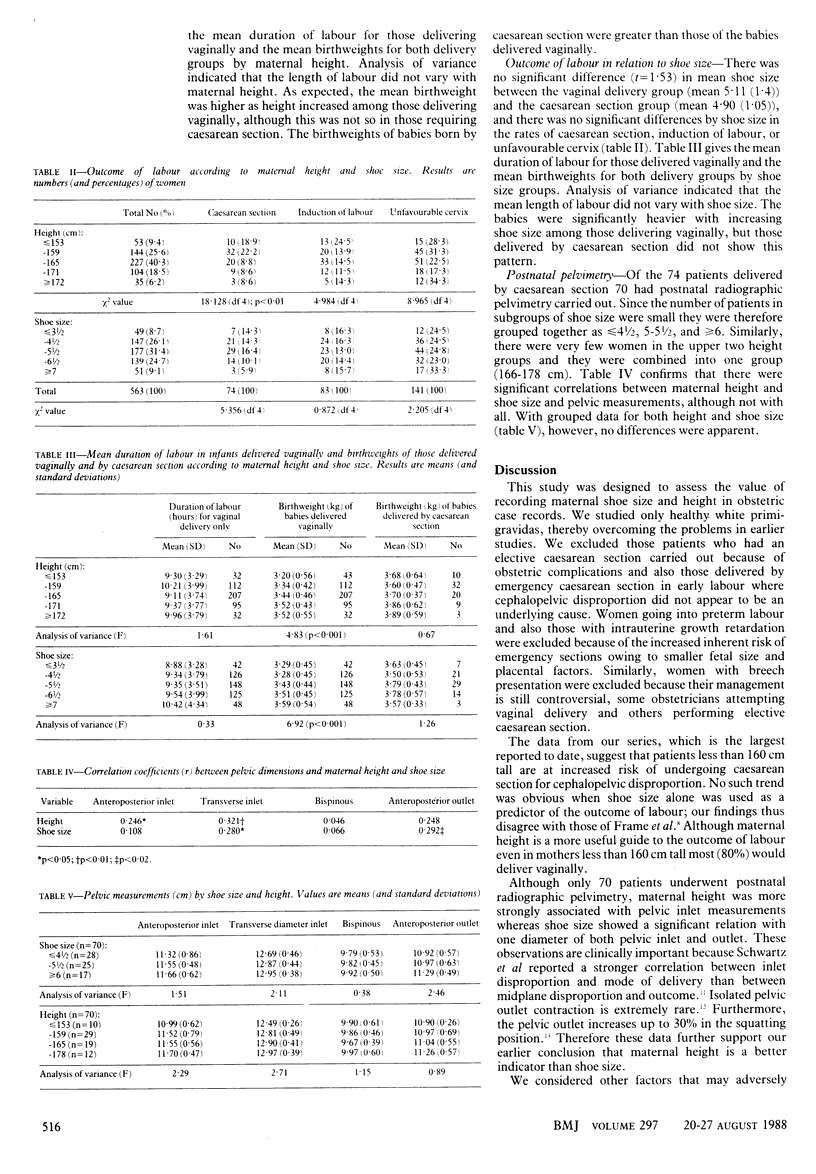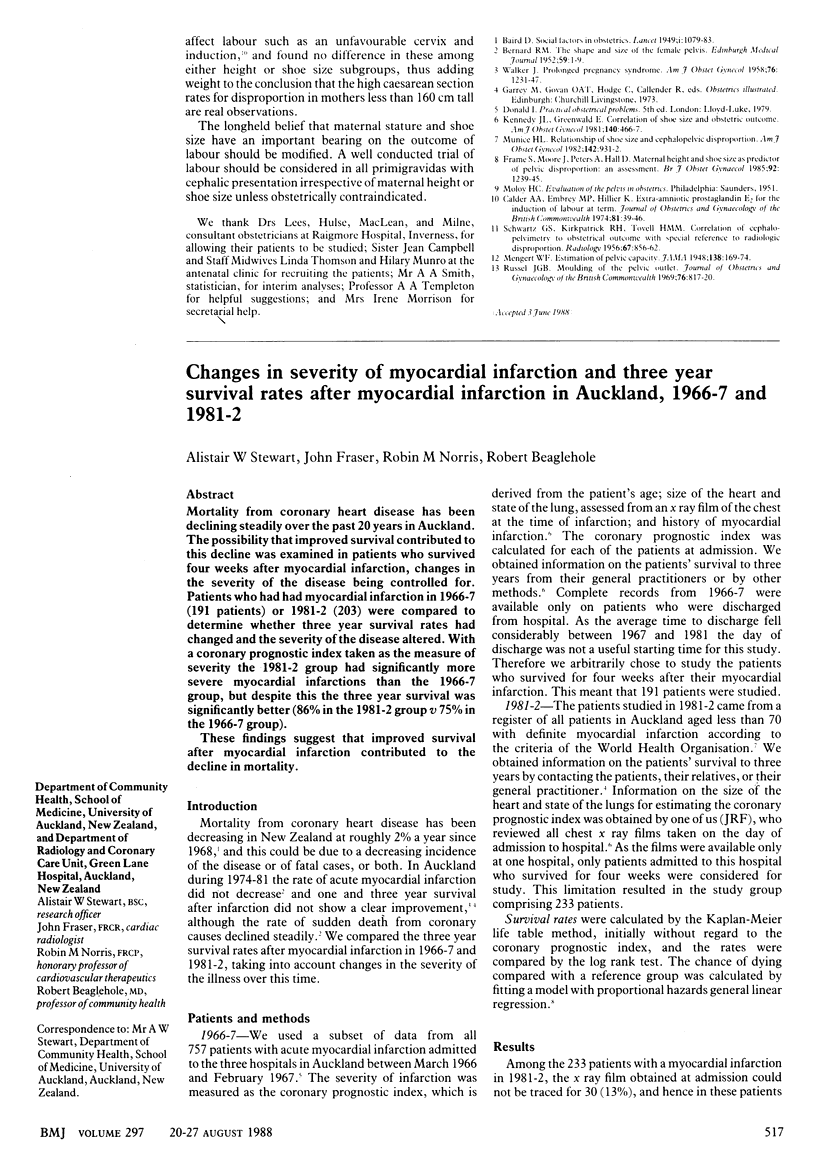Abstract
A total of 563 white primigravid patients at Raigmore Hospital, Inverness, were recruited in a prospective study to examine the association between maternal height, shoe size, and the outcome of labour. There was a significantly increased caesarean section rate in women of short stature but no association between mode of delivery and shoe size. Babies born vaginally had heavier birth weights with increasing height and shoe size. Babies born by caesarean section were heavier than those born vaginally, but their birthweight showed no relation with either height or shoe size. Shoe size is not a useful clinical predictor for the probability of cephalopelvic disproportion, and, although maternal height is a better clinical guide to pelvic adequacy in labour, 80% of mothers less than 160 cm tall delivered vaginally. A well conducted trial of labour should be considered in all primigravid patients with cephalic presentation irrespective of maternal height or shoe size if no obstetric complication exists.
Full text
PDF


Selected References
These references are in PubMed. This may not be the complete list of references from this article.
- Calder A. A., Embrey M. P., Hillier K. Extra-amniotic prostaglandin E2 for the induction of labour at term. J Obstet Gynaecol Br Commonw. 1974 Jan;81(1):39–46. doi: 10.1111/j.1471-0528.1974.tb00362.x. [DOI] [PubMed] [Google Scholar]
- Kennedy J. L., Greenwald E. Correlation of shoe size and obstetric outcome: an anthropometric study. Am J Obstet Gynecol. 1981 Jun 15;140(4):466–467. doi: 10.1016/0002-9378(81)90048-x. [DOI] [PubMed] [Google Scholar]


